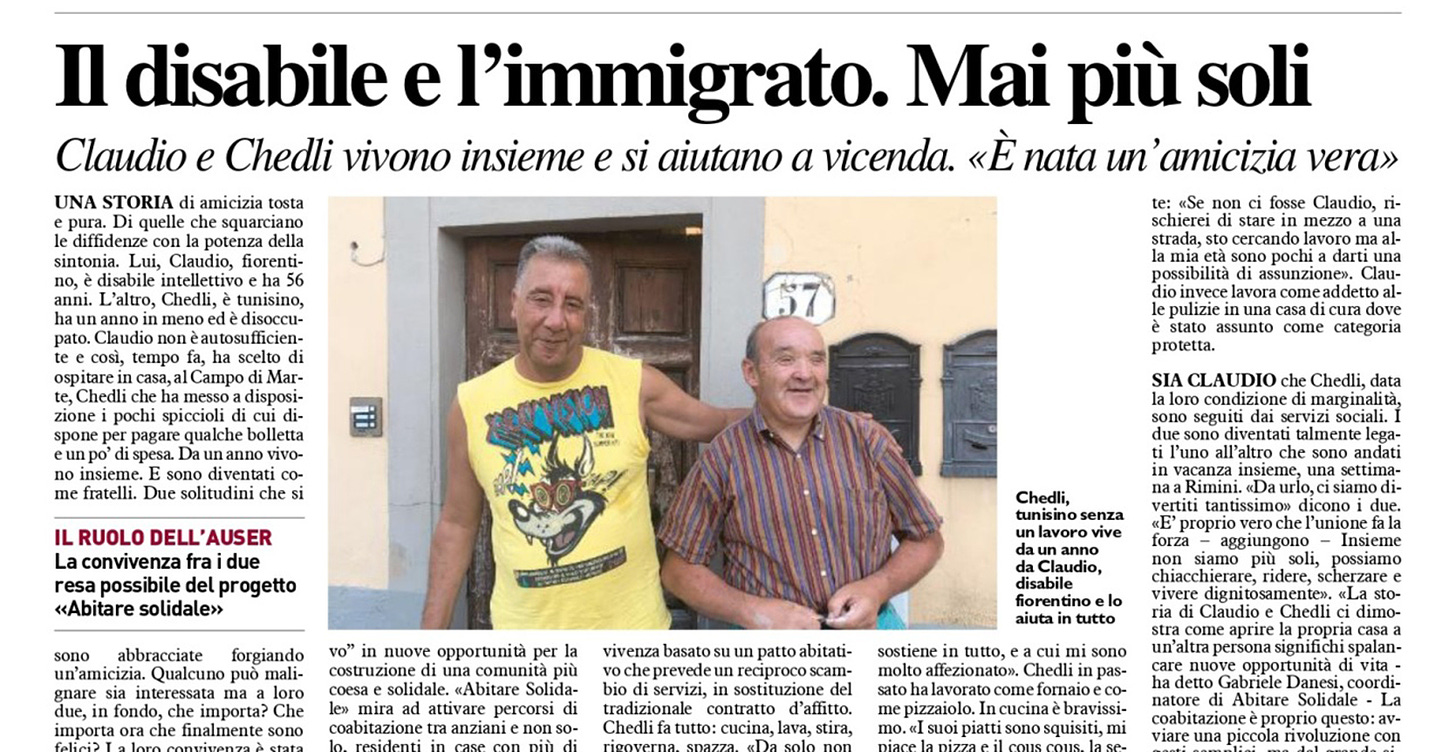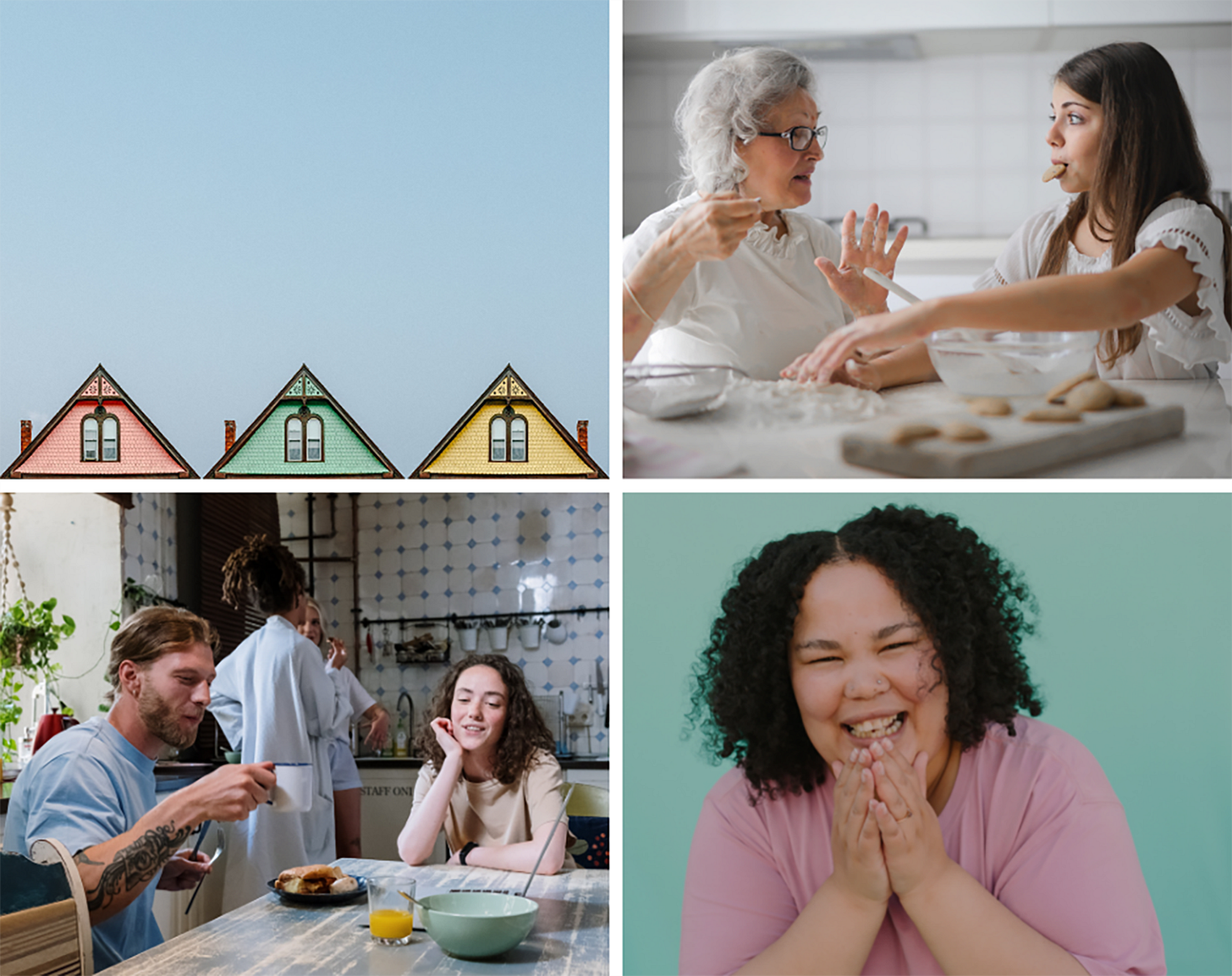In 2013, the French association Habitat Partecipatif transformed the "Day of Intentional Communities", founded in 2009 in the Netherlands, into a broader European initiative: the European Days of collaborative housing. The event falls in May (and this year in September too) and is dedicated to spreading the culture of living together. Many countries, such as France, the Netherlands, Belgium and Italy, joined the project. (Here’s an updated map)
In our Country, the promoters of this initiative are RIVE - Rete Italiana Cohousing e Abitare Collaborativo and MCF Mondo Comunità e Famiglia, which enhance the value of the projects that contribute to the development of participatory living, connect them and offer the public the opportunity to understand that "living in a different way" is possible. This year's programme is extremely rich and Turin, with more than 20 activities, is the capital of the event, thanks to the efforts of Casematte Association and the City of Turin, which in recent years has been dealing with the difficult issue of housing in an innovative way.
As a media partner of the event, together with Terra Nuova Edizioni, we will participate closely in the initiative, and for this reason we want to dedicate a series of postcards to this issue: the postcards are sent from Turin, but they can reach every corner of Europe!
European Intentional Communities Day
May 24th 2022
reading time: 7’ 20’’
To deal with this issue, we need to analyze the different forms of collaborative housing, to learn to use and understand terms that are now quite popular, but that are often used inappropriately. We therefore propose a short glossary of collaborative housing.
COLLABORATIVE HOUSING
Housing experiences that focus on the interpersonal relationship, with a view to creating a more inclusive and supportive community and offering some solutions to the difficulties related to the issue of housing, first of all the impossibility for a wide range of people to access decent housing at sustainable prices. Collaborative living comes in different forms, known as: Social Housing, Cohousing and Solidarity Cohousing.
SOCIAL HOUSING
Social housing (which in Italy is regulated by the Ministerial Decree of the 22nd of April 2008) is a project designed to ensure, through precise allocation rules, adequate housing for families unable to meet their housing needs, mainly for economic reasons, but at the same time lacking the characteristics to access cheaper public housing (low-income family units, elderly people in disadvantaged economic conditions, young couples and adult students). Social housing is mainly based on buildings built or redeveloped through contributions or public and private financing, to be rented (or sold) with agreed rentals that are 30%-40% lower than in the market.
In this field, the city of Barcelona has been a pioneer, managing to connect the housing issue with a particularly attentive and sensitive political vision (a topic that we will explore in the next postcards); important projects are coming to light in Italy, especially in Milan, which is starting to be considered the capital of social housing, also thanks to CENNI di cambiamento, that is now the largest residential project in Europe, sustainable both from a social and environmental point of view (the system of load-bearing structures is entirely in wood).
COHOUSING
It refers to shared housing experiences in residential complexes consisting of private housing and large common areas such as kitchens, laundry areas, educational workshops, playrooms, coworking spaces, green areas, or even of more structured community services such as nurseries, gyms and libraries.
Cohousers, in addition to the sharing of common spaces, are called to carry out services useful to the community: from taking care of children and pets, to weekly shopping, from the maintenance of green areas to the ordinary maintenance of the buildings.
Cohousing is a form of free aggregation among people who have the ability to support each other, which emphasizes the social impact that these solutions can activate and to which the Public Administration should pay particular attention since it creates forms of mutual support and generates activities useful to the community in a broad sense, offering opportunities for work, development and services.
In Northern Europe the tradition of cohousing is really strong, since public institutions pay great attention to social welfare. One of the greatest examples is the VinziRast in Vienna, created in 2009 during a student protest. On that occasion a group of students from the university of architecture occupied an empty building with the intention of creating a self-managed space of community life. The Public Administration intervened not to stop the initiative, but on the contrary to facilitate mediation with public and private actors who created the first shelter for the homeless (and refugees) combined with student accommodation; they also opened a restaurant and some ateliers open to all citizens, where residents can work and rebuild their autonomy.
Last Wednesday, we talked about this with Daniela Patti, co-founder and director of Eutropian, in an online talk that you can find here.
SOLIDARITY COHOUSING
It’s a cohousing project based on a pact that provides for a reciprocal exchange of services, replacing the traditional rental contract. Solidarity cohousing aims at the activation of cohousing paths between those who live in houses that are oversized for their living needs and possibilities and those who, due to the crisis and precariousness, are at risk of intermittent poverty, social marginality and are unable to access the right to housing. Cohousing is based on the principle that the construction of strong, responsible and supportive interpersonal relationships can contribute, through the conscious sharing of the same living space, to the strengthening of innovative social protection systems, capable of integrating traditional public services and promoting forms of active citizenship. In this field, however, Italy is a pioneer with the award-winning project Auser Abitare Solidale Firenze1, which for more than ten years has represented a sort of small cultural revolution that has led fragile subjects to become actors of a personal redemption and to cover a new social relevance. There are now hundreds of families and people included in the cohousing paths, and in recent years similar experiments came to light in other Italian regions, such as Marche, Emilia Romagna, Piemonte (where the Casematte Association is becoming a promoter of the project).
Unfortunately, we all know that the Italian system is based on a difficult bureaucracy and that there is a lack of common strategies and coordinated actions between the different public, private, non-profit and low-profit actors, which often makes the projects "interesting", but difficult to actually implement and that do not meet the interest of investors.
This is why the collaborative May initiative is so important, since it allows us to build a network, to share practices, problems, successes and failures, making sure that the housing revolution can gradually generate a deep cultural change.
Here you will find an updated calendar of all the national events. You can search for the one that is closest to you and if you feel like it… send us a postcard from there!
If you’ve read this far… THANK YOU!
If you liked this post, why not share it?
and if you have any comments or suggestions, write us!
See you for the next Postcard!
In 2012 Abitare Solidale was chosen as one of the best of the 120 community social projects, within the research "Innoserv. Social services innovation", by the University of Heidelberg, to build new welfare models. It also won two important awards: the European Award Social Innovation in Ageing (2nd place), promoted by the King Baudouin Foundation, the Caixa Foundation and other international foundations; UniCredit Carta 2013 "Strategies of social cohesion in favor of the Elderly", promoted by UniCredit Foundation.








